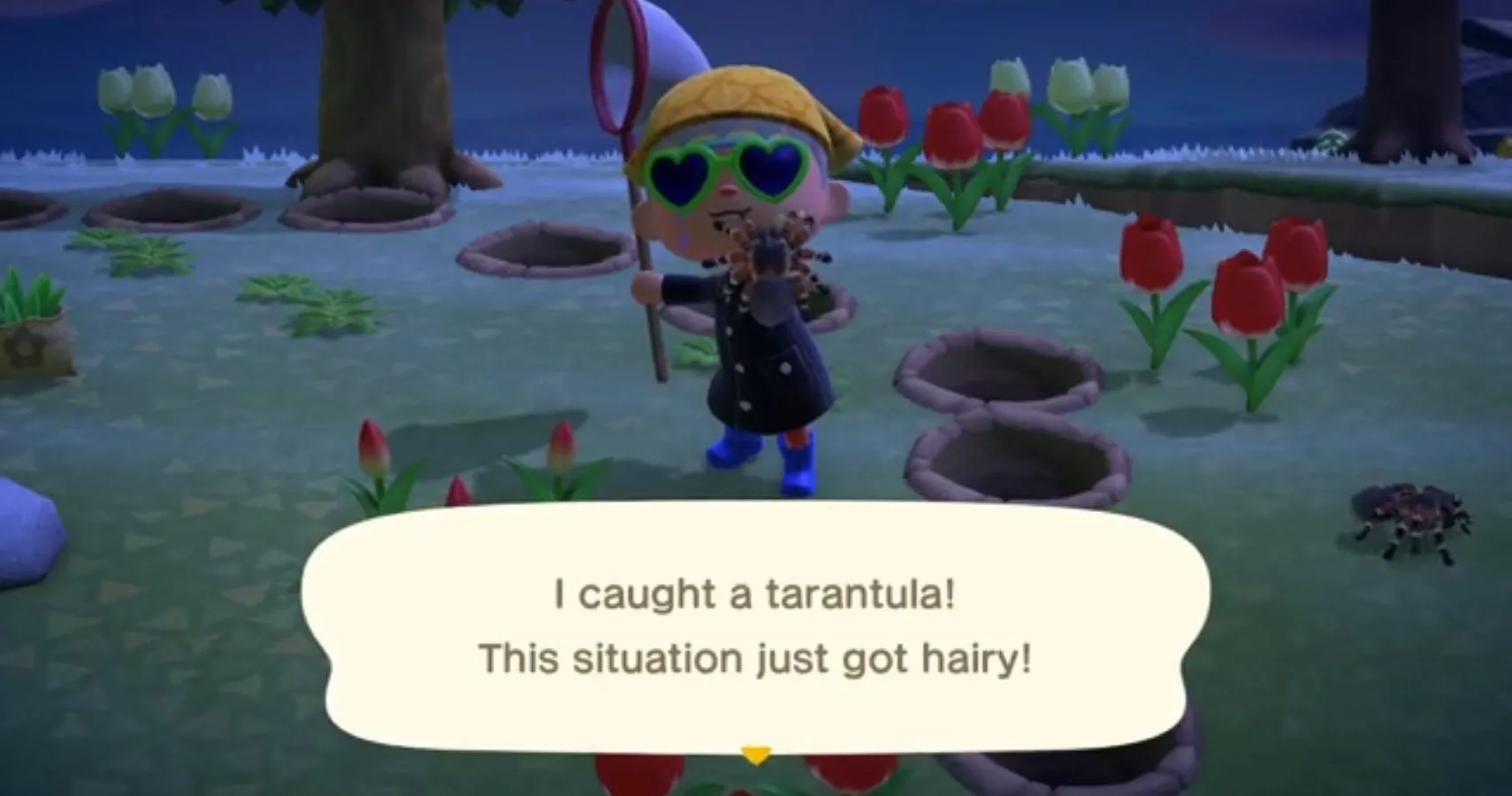Animal Crossing Multiplayer Tarantula Hunting Overview
Animal Crossing New Horizons offers a unique and engaging experience, and one of the most exciting activities is tarantula hunting, especially when done with friends in multiplayer mode. Catching these elusive creatures can be a lucrative endeavor, providing you with Bells (the game’s currency) and contributing to your museum’s critter collection. However, tarantula hunting isn’t as simple as it seems. These spiders are quick, aggressive, and can easily ruin your day by biting you. This guide will walk you through the essentials of tarantula hunting in multiplayer, providing tips, strategies, and precautions to ensure a successful and enjoyable experience.
Understanding Tarantula Behavior
Before you can successfully hunt tarantulas, you need to understand their behavior. Tarantulas in Animal Crossing New Horizons are most active at night, typically between 7 PM and 4 AM, and on islands that have a lot of empty space. They roam the island and will chase after you if they spot you. Their aggressive behavior is triggered when you get too close or make sudden movements. They will rear up and then charge at you, resulting in a bite that will cause you to faint and respawn at your house. Observing their movement patterns and understanding their reactions is key to catching them successfully.
Tarantulas are very sensitive to movement. They react to sudden changes in speed or direction. Approaching them slowly and cautiously is essential, and it’s much better to stop completely rather than make any sudden moves that might cause them to attack. Be patient and observe their patterns before making your move. Consider the terrain, as the ground type affects your speed and ability to react. Also, take into account wind currents that might interfere with your approach.
Spawning Mechanics & Island Types
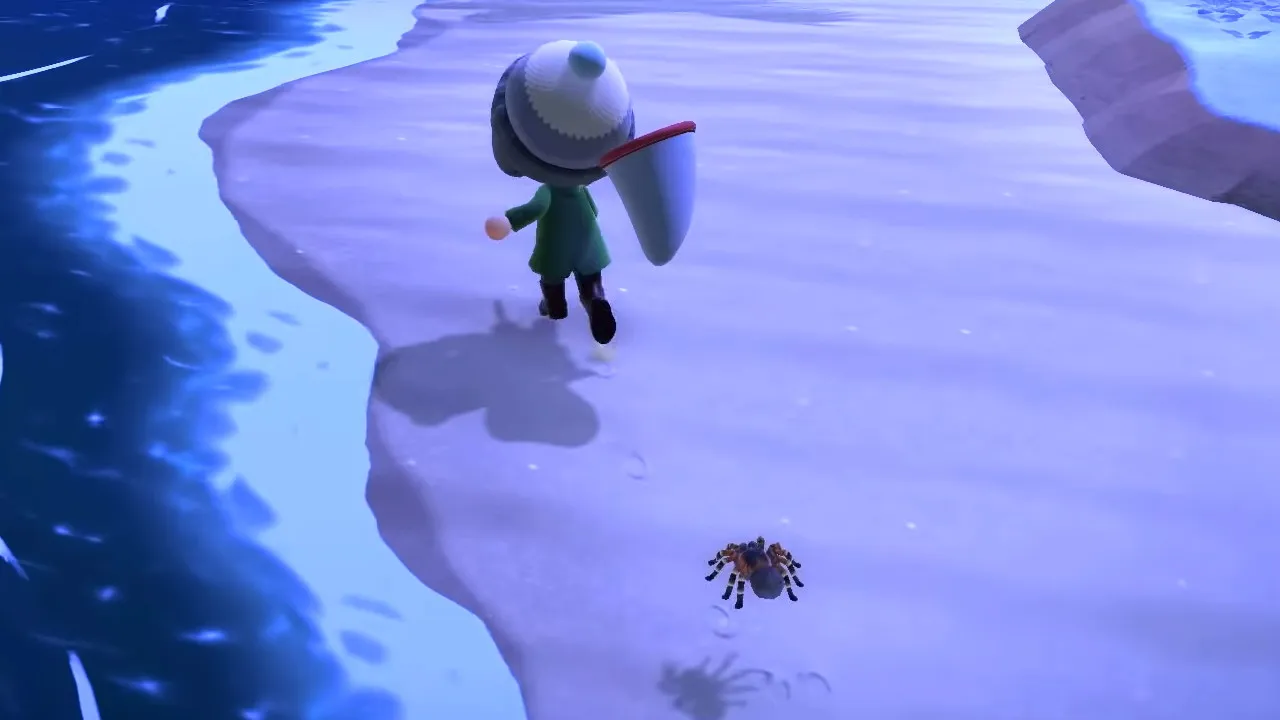
Tarantula spawning is influenced by several factors, including the type of island you are on. Certain islands are more conducive to tarantula spawning. These are usually flat and open islands with minimal obstructions. Islands where the environment is clear, such as the ones with sparse trees or low hills, are ideal. Moreover, the time of year and in-game season play a crucial role in tarantula spawning. During specific seasons, the game may favor or disfavor certain insects and creatures. In the Northern Hemisphere, tarantulas are typically most common from November to April, while in the Southern Hemisphere, this is from May to October.
The game also has mechanics that limit the number of tarantulas that can spawn at once. If the island is already populated with other bugs, it will be more difficult for tarantulas to appear. Some players have created special tarantula islands to maximize their chances of finding them. These involve removing all the flowers, trees, and rocks to create an open space, so tarantulas are more likely to spawn. Understanding the spawn mechanics can significantly improve your hunting efficiency.
Essential Tools & Preparations
Before heading out on a tarantula hunt, proper preparation is key. You will need a few essential tools and knowledge to increase your chances of success. The most important is your net, which you’ll use to catch the tarantulas. Ensure that you have a durable net and plenty of them, because they will break over time. You can craft or purchase a net from Nook’s Cranny. Furthermore, before embarking on your tarantula hunt, ensure that your inventory has enough space to carry your catches, as well as any other resources or items you may find on the island.
The Net Your Most Important Tool
The net is your primary tool for catching tarantulas. Knowing how to use it effectively is essential. The key is to approach the tarantula slowly, holding down the A button to ready your net. Keep a close eye on the tarantula’s behavior. When it rears up, immediately stop moving, and do not make any sudden movements. Once the tarantula lowers and begins to move again, you can inch closer. When you are close enough, and it’s safe, release the A button to swing your net and catch the tarantula. Timing is crucial; you’ll need to judge the distance and react quickly.
Remember, the net has a limited range, so you will need to get close, but not too close. Practice will help you improve your timing and accuracy. Practice on easier insects to get the feel of it before trying tarantulas. Consider the terrain, as uneven ground can affect your swing. Also, be aware of any potential obstacles, such as cliffs or water, which might hinder your ability to swing your net.
Clearing Island & Resource Management
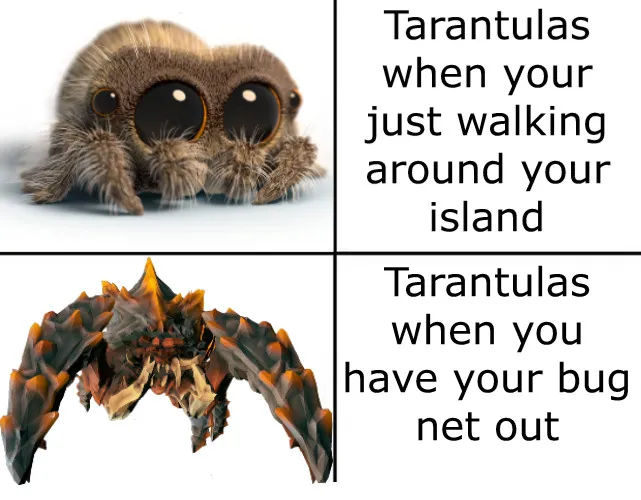
Before you start hunting, clear the island of anything that might get in your way. This includes flowers, rocks, and trees. These obstructions can hinder your movement and make it difficult to approach tarantulas without scaring them. Clearing an island is essential, especially for creating a tarantula farm where these insects are more likely to spawn. Consider also removing any weeds, and be sure you have cleared a path to avoid getting stuck in the undergrowth.
Additionally, make sure you have the necessary resources. This includes crafting nets if you break any. Furthermore, plan your inventory space for carrying caught tarantulas. It’s also advisable to bring some basic tools like a shovel (for removing rocks or digging up holes to trap tarantulas) and a vaulting pole (to cross rivers).
Inviting Friends & Multiplayer Strategy
Multiplayer hunting can significantly improve your success rate and make the process more fun. When playing with friends, coordination and communication are key. To invite friends to your island, you will need an active Nintendo Switch Online subscription. Then, ensure that your gates are open to friends. Consider setting up a designated meeting point to discuss your plans. It’s best to have a clear communication plan to inform others when tarantulas are spotted and to coordinate your movements.
Coordination & Communication is Key
Effective communication is important in multiplayer mode. Consider designating a leader to call out tarantula locations and coordinate movements. Use in-game chat or voice communication to share information. Agree on a system for identifying tarantula locations. Make sure all players understand the strategy. This may include calling out tarantula locations, coordinating net swings, and deciding on trap placement if you decide to set up any traps. Avoid crowding each other and give each person space to maneuver.
When one player spots a tarantula, everyone should be alerted. Then, decide as a team how to approach the situation. Consider whether to try and catch the tarantula immediately or to lure it. Make sure that everyone is aware of the tarantula’s direction. If a player is bitten, inform the others and strategize your next move. A well-coordinated team is more likely to succeed in catching the tarantulas.
Dividing Tasks & Maximizing Efficiency
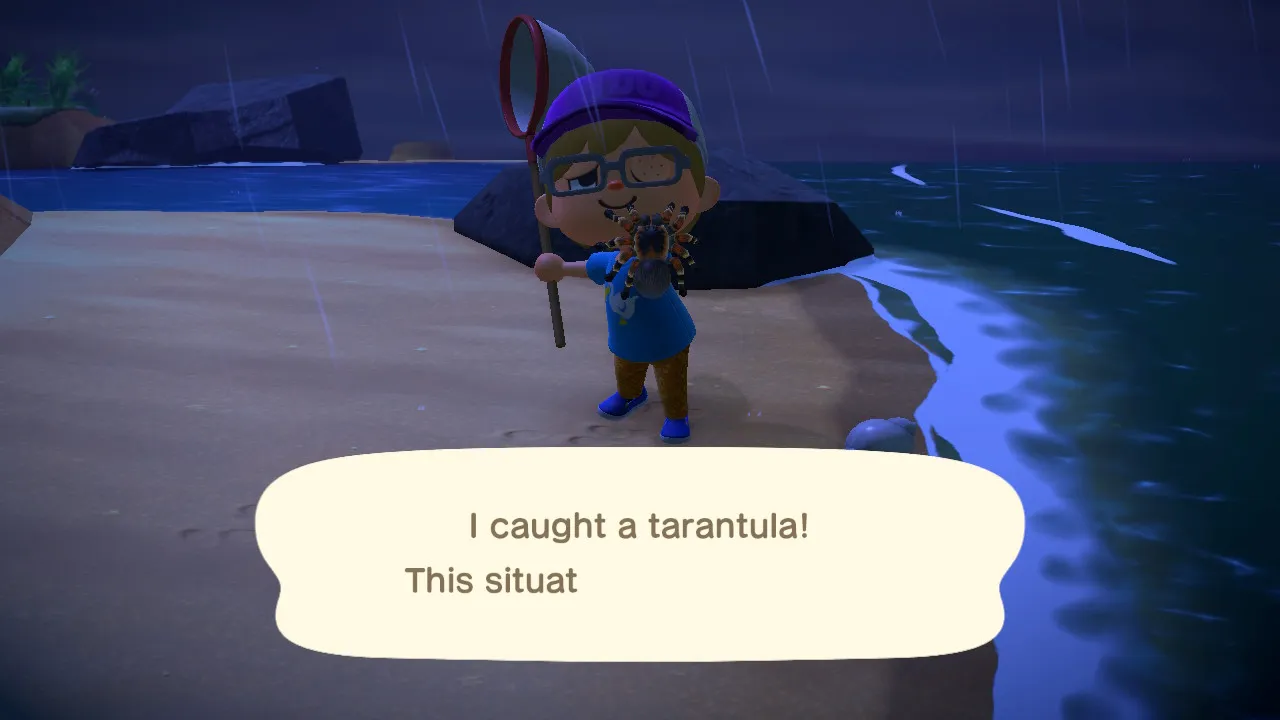
In multiplayer, you can divide tasks to maximize efficiency. One player can focus on scouting and calling out tarantula locations. Another can concentrate on clearing the path and removing obstacles. Another can be responsible for catching the tarantulas. If one player is good at approaching the tarantulas, they can take the lead in catching them, while others can create space to avoid disturbing other insects. You can also have one person in charge of crafting nets or collecting resources.
Consider forming a line or using a specific formation to cover more ground. If the tarantula spawns in an area, assign a player to that area. Players can also take turns, catching tarantulas to make sure nobody is overwhelmed. Rotate tasks regularly to prevent fatigue and keep everyone involved. These strategies ensure that the hunting process is as efficient and fun as possible.
Best Times & Locations for Tarantula Hunting
The best time to hunt tarantulas is during their active hours, typically between 7 PM and 4 AM in your local time. During these hours, the number of tarantulas spawning will be at their highest. Be sure you have enough time to hunt, because you will want to maximize your time on the island. Remember that in the Northern Hemisphere, tarantulas are most common between November and April, so be sure to plan accordingly.
Optimal Time of Day & Month
The best time to hunt tarantulas is when they are most active. This usually means nighttime. Be sure to check the in-game time to ensure you are hunting when tarantulas are most likely to appear. In most locations, tarantula spawning peaks during the night. Be mindful of the season as well. While tarantulas can appear year-round, their frequency varies.
During the peak season, you can expect a higher spawn rate. Be aware of any special events that might alter spawn rates. For example, during a bug-off event, the spawn rate of tarantulas can be affected, meaning a less frequent occurrence. Plan your hunts to coincide with the best times of the day and month.
Island Selection & Customization Tips
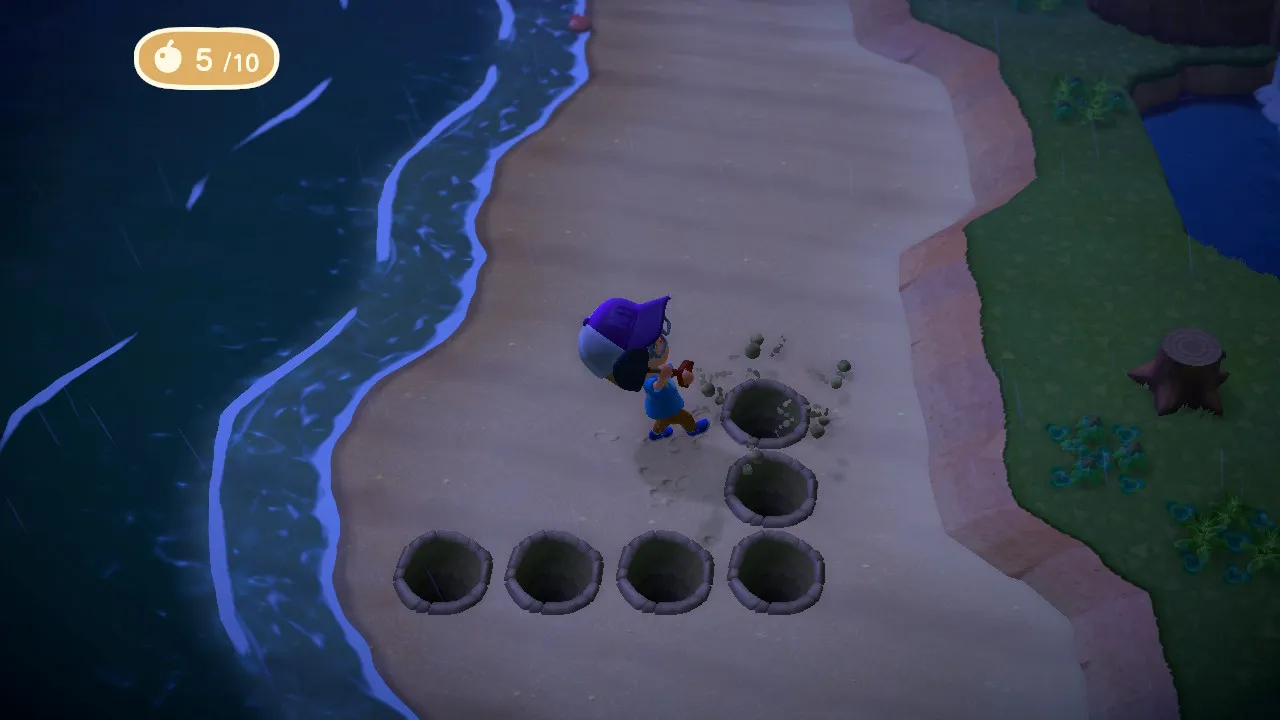
Certain islands are better for tarantula hunting than others. Look for islands that have a large, open space and minimal obstacles. Ideally, you want an island that is flat, with few trees, flowers, or cliffs. These kinds of islands are easier to navigate, giving you more opportunities to spot and catch tarantulas. Consider visiting Mystery Islands through the Nook Miles Ticket to find good tarantula hunting locations.
You can also customize your own island to improve your hunting success. You can clear all the flowers and trees to increase the spawn rate of tarantulas. Remove all items that might obstruct your view. By making your island tarantula-friendly, you are maximizing your chances of finding these creatures. You might consider setting up a dedicated tarantula farm by clearing everything to create an open field.
Tarantula Farming Strategies
Tarantula farming is a strategic way to maximize your tarantula-catching efficiency, and it involves creating an environment where tarantulas are more likely to spawn. These strategies typically include clearing the island of other bugs and obstructions to maximize the spawn rate of tarantulas. Also, you can increase your chances of success. Be patient and persistent, as the results will be worth it, especially in multiplayer mode.
The ‘Island Hop’ Method
One popular strategy is the ‘Island Hop’ method. With this method, you visit different Mystery Islands using Nook Miles Tickets. The goal is to find an island that is suitable for tarantula hunting. When you arrive on an island, clear it of flowers, trees, and rocks. Then, keep an eye out for tarantulas. If you find one, catch it, and repeat the process until your inventory is full. This method lets you cover more ground and find more tarantulas. Keep in mind that the rate of tarantula spawning can vary.
If the island isn’t suitable, consider moving on to another island. The advantage of this method is that it gives you many opportunities to find the ideal tarantula hunting spot. Be sure you have enough Nook Miles Tickets ready. Remember to be mindful of the time of day and the in-game season. Be prepared for some trial and error.
The ‘Perfect Island’ Setup
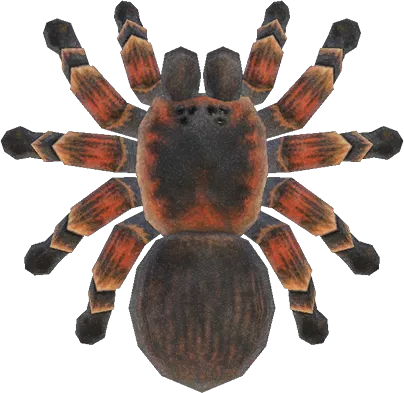
The ‘Perfect Island’ setup involves a more dedicated approach. You will need to completely clear the island to maximize your tarantula spawning rate. Remove all flowers, trees, rocks, and any other obstacles. You will need to leave only the essentials, such as the airport and your resident services. Clearing the island can take time, but this sets the stage for high rates of tarantula spawning. Then, wander around the island. Once a tarantula appears, be ready to approach it slowly and catch it.
Consider using a specific layout to help guide the tarantulas and ensure they stay in a specific area. This might involve digging a series of holes. The key is to create an environment where tarantulas can thrive. By strategically clearing and customizing your island, you can create the ideal tarantula-hunting environment. Be aware, it might take some time and effort, but it can pay off in the long run.
Safety Precautions & Common Mistakes
Tarantula hunting can be exciting, but safety should always be the priority. There are a few common mistakes to avoid. Knowing how to stay safe will ensure that you have a successful hunt. The biggest risk is getting bitten. Understanding how to avoid tarantula bites and dealing with other threats will help you stay safe.
Avoiding Tarantula Bites
The most crucial thing is to prevent tarantula bites. Approaching the tarantula slowly and cautiously can help. When you see a tarantula, immediately stop and hold the A button to prepare your net. Do not make any sudden movements. Keep a safe distance and observe its movements, and always be aware of your surroundings. Avoid running or moving too quickly. Move slowly and deliberately, inching closer only when it’s safe. If a tarantula rears up, stop immediately, and wait for it to calm down before continuing.
Watch out for any obstacles that might interfere with your movement. If you get bitten, you will faint, and you will wake up at your house. You will lose any items that you were carrying. Also, be mindful of other players and their movements. This can sometimes lead to the tarantula becoming aggressive, so maintaining awareness and good coordination among players is very important.
Dealing with Other Bugs & Creatures
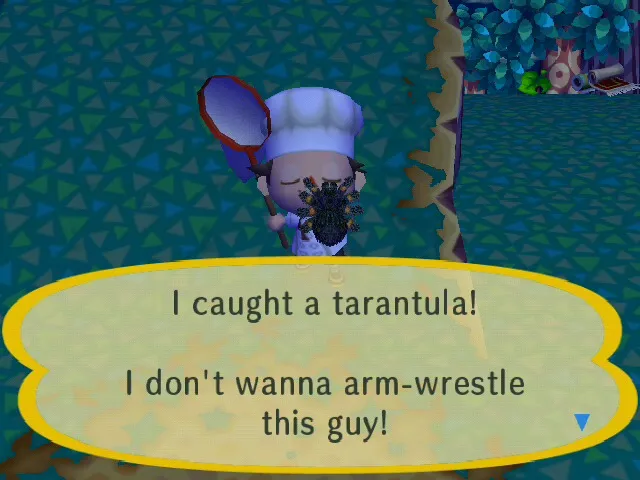
Be aware of other insects and creatures. They can sometimes get in the way. If you’re on a Mystery Island, there are often other bugs, and they can spawn at the same time as the tarantulas. Other insects can also interfere with your hunting. Some of these insects can also be dangerous, such as wasps or scorpions. If you are stung or bitten by another insect, you will faint, which will interrupt your hunt.
Be prepared to deal with any unwanted encounters. If you encounter a wasp, run away quickly to avoid getting stung. When you clear an island for tarantulas, be sure to remove any obstacles. In addition, be cautious of other players that might be in the area. Also, remember that scorpions can be aggressive, so take the same care with them as you do with tarantulas.
Conclusion
Multiplayer tarantula hunting is a rewarding and exciting activity in Animal Crossing New Horizons. By understanding tarantula behavior, preparing your island, coordinating with friends, and following safety precautions, you can significantly increase your success. Whether you are new to the game or an experienced player, this guide provides valuable insights and strategies to enhance your tarantula-hunting experience. So gather your friends, prepare your nets, and enjoy the thrill of the hunt. Happy hunting!
